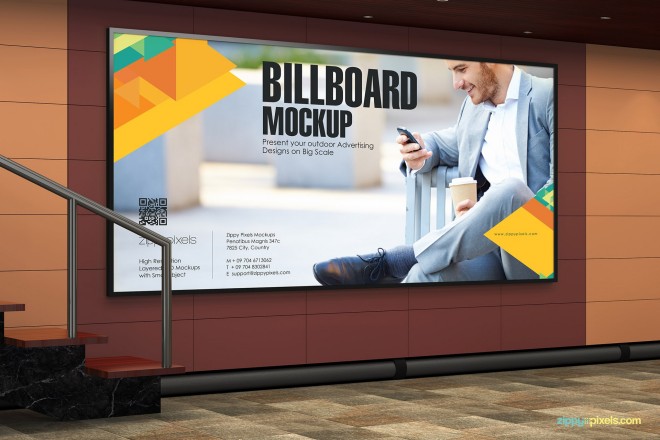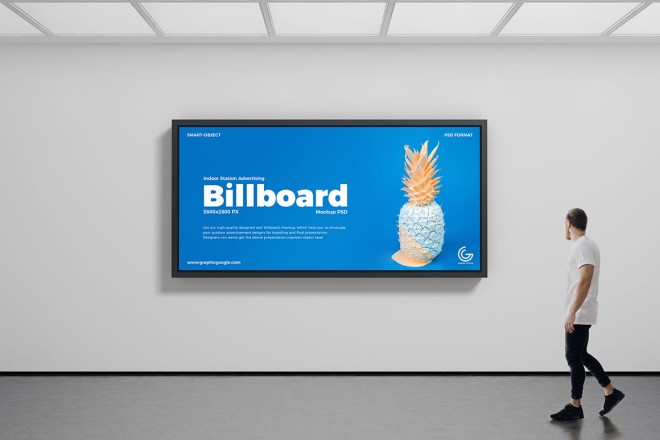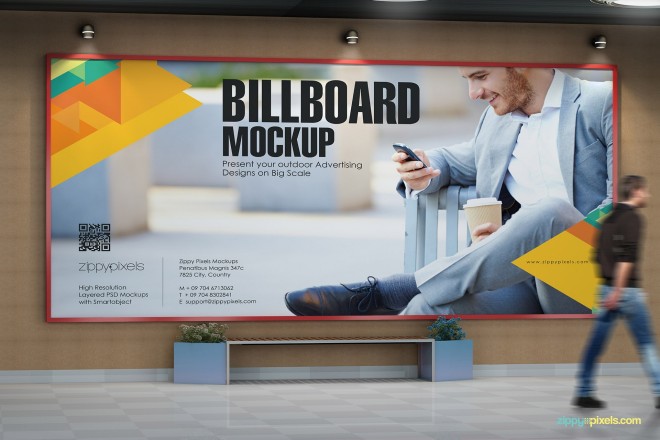Introduction

In the busy rhythm of the city, underground pedestrian passages have become an important part of the city’s transportation network. They not only carry the daily passage of pedestrians, but also are potential spaces for the dissemination of urban culture and information.
With the rapid advancement of Affichage LED technology, people have begun to explore its application in underground passages in order to improve guidance efficiency and enhance visual appeal. But is such a technical application feasible?
1. What are the potential advantages of LED display screens in underground pedestrian passages?
LED display screens have really brought a lot of benefits to underground pedestrian passages, making our daily travel more convenient and interesting. Below, let’s talk about its highlights:
1). Clear and pleasing to the eye
The light in the underground passage is dim, but the LED display screen has high luminosité and bright colors, and the guiding information is clear at a glance.
Moreover, it can also move, unlike the previous static signboards that are so monotonous. Animation and gradient colors all of which make the passage look more dynamic, and the mood is much better when walking in it.
2). Lots of information and high efficiency
LED display screens cannot only guide the way but also tell passers-by the latest news, weather forecasts, and even nearby traffic conditions. In this way, when we are waiting for the subway or crossing the road, we will not feel bored, and we can also learn some practical information.
Especially in case of emergency, the display screen can immediately sound an alarm and guide us to evacuate safely, which is really convenient and reassuring.
3). Display window of urban culture
Don’t forget that an LED display screen is also a good place to display urban culture. It can play videos with local characteristics, introduce history and folk customs, and let those of us living in the city know more about our hometown.
Sometimes, you can also see some artistic designs, which are really eye-catching and feel that our city is becoming more and more interesting.
2. What are the technical and safety requirements for installing LED display screens on underground sidewalks?

1). Technical requirements
1.1). Lighting and guidance adaptability
- Light source adaptability:
The light in the underground pedestrian passage is relatively dim, so the LED display screen needs to have sufficient brightness to ensure that the guidance information is clearly visible in the passage.
At the same time, the brightness of the display screen should be able to automatically adjust according to the light changes in the passage to avoid discomfort caused by too bright or too dark.
- Guide information optimization:
The guidance information on the display screen should be concise and easy to identify. The design of font size, color contrast, etc., should fully consider the visual needs of pedestrians when walking in the passage to ensure that the information is clear at a glance.
1.2). Heat dissipation and protection characteristics
- Performances de dissipation thermique :
Underground pedestrian passages are usually relatively closed and have limited heat dissipation conditions. Therefore, the display screen should have an efficient heat dissipation system, such as a built-in cooling fan or heat sink, to ensure that the equipment can maintain stable performance under long-term work.
- Moisture-proof and waterproof design:
The underground environment is relatively humid, and the shell of the display screen should be made of waterproof material and have a waterproof grade (such as IP65) to prevent moisture from invading the internal circuit and causing short circuits or damage.
- Insect and mildew prevention measures:
Set sealing strips or dustproof nets around the display screen to prevent insect pests and mildew erosion. At the same time, the display screen should be cleaned regularly to keep its surface clean and reduce the chance of mildew growth.
1.3). Source de courant and line layout
- Stable power supply voltage:
The power supply of underground pedestrian passages may be subject to certain restrictions, so the power supply voltage of the display screen should be stable to avoid equipment damage caused by voltage fluctuations.
- Line safety layout:
The power supply line should be reasonably laid out to avoid crossing the pedestrian walking path and reduce safety hazards. At the same time, the line should use flame-retardant materials to prevent fire.
- Overload and short-circuit protection:
The power line should be equipped with overload and short-circuit protection devices to ensure that the power supply can be cut off in time in the event of equipment failure or abnormality to prevent fire or electric shock accidents.
2). Safety requirements
2.1). Electrical safety
- Insulation and grounding:
The electrical system of the display screen should have good insulation performance, and a reliable grounding system should be set up to prevent the risk of electric shock caused by electrical failure.
- Electrical isolation:
The internal circuit of the display screen should be electrically isolated to ensure that pedestrians will not be injured by electric shock when touching the display screen.
2.2). Structural safety
- Stable support structure:
The support structure of the display screen should be strong enough to withstand the weight of the display screen and the impact force generated by pedestrians when touching or colliding.
- Reasonable installation position:
The display screen should be installed in a position where pedestrians cannot easily collide to avoid accidental injuries. At the same time, the pedestrian’s line of sight height should be considered to ensure that the guide information is easy to identify.
2.3). Environmental adaptability
- Contrôle de la température et de l'humidité :
The temperature and humidity in the underground pedestrian passage may be high, and the display screen should be able to work normally in this environment.
Therefore, LED display screens that are adapted to high temperature and high humidity environments should be selected, and regular maintenance and upkeep should be performed.
- Dust and corrosion prevention:
In underground pedestrian passages with a lot of dust or corrosive gases, measures should be taken to protect the display screen from damage. For example, use dust covers or anti-corrosion paints, etc.
2.4). Fire safety
- Fireproof materials:
The display screen and its surrounding materials should be made of materials that meet fire protection standards to reduce the risk of fire.
- Fire isolation:
Set up fire isolation belts or add fireproof covers around the display screen to prevent the fire from spreading to other areas.
2.5). Maintenance and operation safety
- Entretien régulier :
Clean and maintain the display screen regularly to ensure that there is no dust and dirt on its surface. At the same time, check whether the display screen’s cooling system, power supply line, etc., are working properly.
- Spécifications de fonctionnement :
Develop and follow the correct switch screen operation steps and daily maintenance procedures. During operation, ensure that pedestrians will not be injured due to misoperation.
- Training and education:
Provide professional training and education to operators to understand the working principle of the display screen, safe operating procedures, and emergency response measures.
3. What are the limitations and challenges of installing LED screens on underground sidewalks?

Installing LED screens in underground sidewalks is not only a fusion of technology and aesthetics, but also a comprehensive consideration of structural design, waterproofing and drainage, lighting design, ventilation conditions and other aspects.
1). Consideration of structural design reference period and safety level
1.1). Structural design reference period
- Long-term stability:
The structural design reference period of underground sidewalks is often long, usually requiring 50 years or even longer. Therefore, when installing LED screens, it is necessary to ensure that its structural design and installation method can remain stable for a long time and do not cause any damage to the original structure.
- Professional design:
The installation location and method of the display must be carefully planned and calculated by a professional design team to ensure that it is coordinated with the overall structure of the underground sidewalk and meets the requirements of safety, stability and beauty.
1.2). Safety level
- High standard requirements:
As a public place with dense crowds, underground sidewalks have extremely high safety level requirements. The installation of LED screens must strictly comply with relevant safety standards and specifications to ensure that no harm is caused to pedestrians during normal operation and emergencies.
- Sécurité électrique :
The electrical system of the display needs to have extremely high insulation performance and a reliable grounding system to prevent the risk of electric shock caused by electrical faults.
At the same time, the electrical system should be maintained and inspected regularly to ensure that it is in good working condition.
2). Waterproof and drainage design requirements
2.1). Waterproof requirements
- High waterproof level:
The underground sidewalk environment is humid, and the LED display needs to have an extremely high waterproof level (such as IP67 or higher) to prevent moisture from invading the internal circuit and causing short circuits or damage.
- Waterproof sealing design:
The outer shell of the display should be made of waterproof material and have a waterproof sealing design to ensure that it can still work normally in a humid environment. At the same time, the interface and connection line of the display should also use waterproof connectors and waterproof cables to ensure the waterproof performance of the entire system.
2.2). Drainage requirements
- Improve the drainage system:
The drainage system of the underground sidewalk must be perfect to prevent water accumulation from damaging the display.
The drainage system should include rainwater collection, discharge, and cleaning to ensure that the accumulated water can be discharged in time in extreme weather, such as heavy rain.
- Reasonable installation location:
The installation location of the display should avoid low-lying areas and areas prone to water accumulation to reduce the possibility of water accumulation. At the same time, drainage holes or drainage grooves should be set on the back and sides of the display screen to drain the internal water in time.
3). Lighting design standards and ventilation requirements
3.1). Lighting design standards
- Brightness and uniformity:
The lighting design of the underground walkway needs to meet certain requirements such as brightness, uniformity and glare restrictions to ensure the safety and comfort of pedestrians.
The brightness of the LED display needs to be coordinated with the lighting design of the underground walkway to avoid discomfort caused by too bright or too dark.
- Automatic adjustment:
The display screen should have an automatic brightness adjustment function, which can be automatically adjusted according to changes in ambient light to ensure that the information can be clearly seen under any lighting conditions.
3.2). Ventilation requirements
- Good ventilation conditions:
The ventilation conditions of underground walkways are relatively poor, and moisture and harmful gases are easily accumulated.
Therefore, ventilation requirements must be considered when installing the display screen to ensure that the equipment can maintain good heat dissipation and air circulation.
- Conception de dissipation thermique :
The shell design of the display screen can adopt structures such as hollowing or heat sinks to increase the heat dissipation area and ventilation effect.
At the same time, ventilation holes or air ducts can be set around the display screen to discharge internal heat and moisture in time.
- Entretien régulier :
In order to ensure the normal operation of the display and extend its service life, the display needs to be maintained and cleaned regularly.
This includes cleaning the dust and dirt on the surface of the display, checking whether the heat dissipation system and ventilation holes are unobstructed, etc.
Conclusion
After a comprehensive analysis of the installation of LED display screens in underground pedestrian passages, we can conclude that although there are certain technical and environmental challenges, this installation is entirely possible under the premise of following strict safety and design standards.
The introduction of LED display screens can not only improve the guidance and aesthetics of underground passages but also add a touch of modern technology to the city.
Enfin, si vous souhaitez en savoir plus sur les écrans d'affichage LED, veuillez nous contacter.
